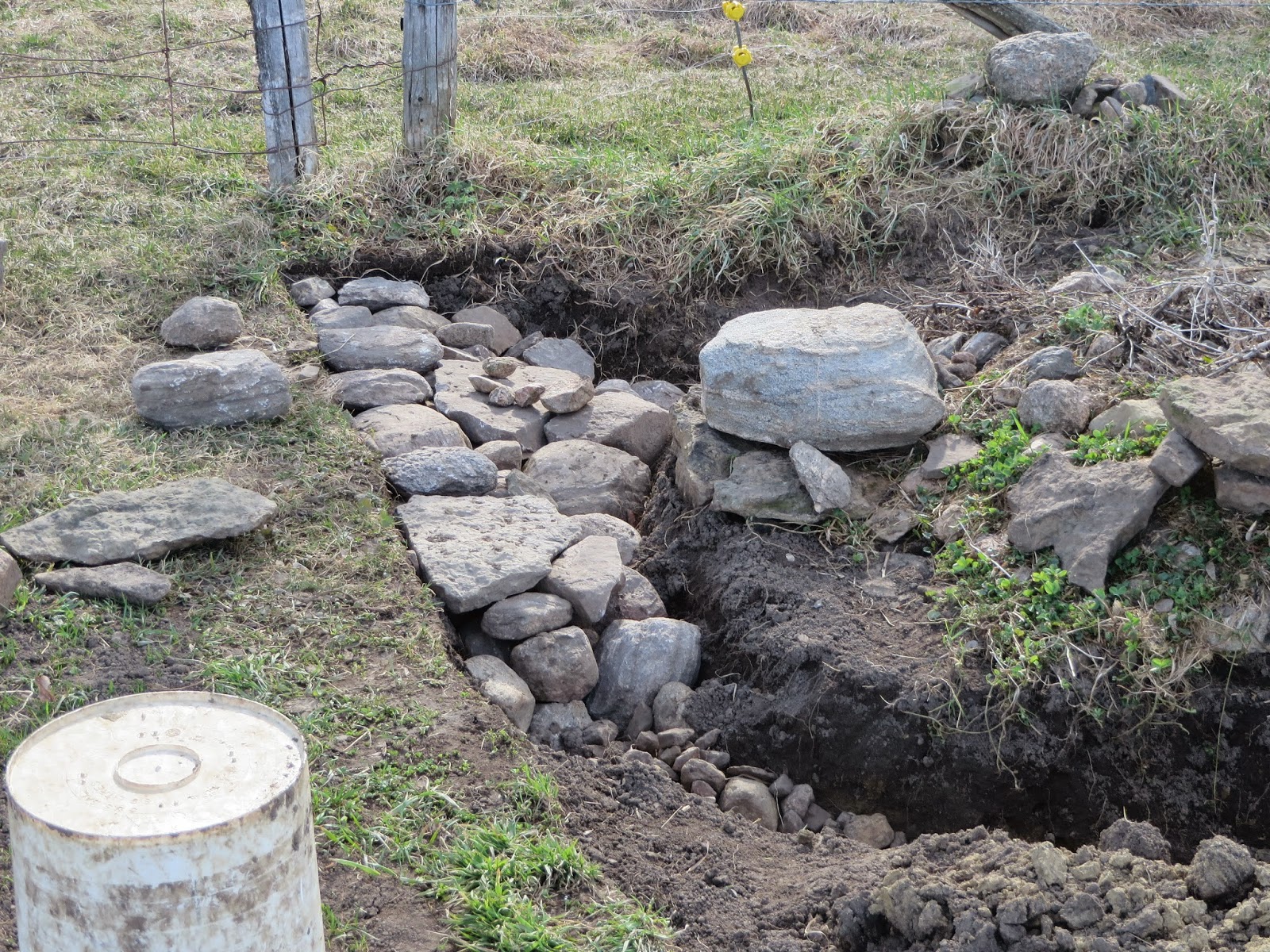Whitsend has reached its sales capacity for 2015. No more shares are available for this season.
If you are still interested in our certified organic CSA Farm for next season, please keep an eye on our website and track our progress.
We will have our open house on August 8th, and there may be food available at the farm gate stand for purchase on that day.
We may also have surplus as late summer and fall approaches, contact me if you are interested.
I am considering offering a bigger early bird discount next season as well.
Thanks again for your interest!
Bob
Hey Everyone:
 Just returned from our annual seed potato pick-up.
Just returned from our annual seed potato pick-up.I snapped a couple of pix at the Ellenberger farm, wishing now I had taken a few more.
This is the cellar your seed potatoes spent the winter in. It is in the lower floor of a barn that is built into a hillside. With three walls surrounded by earth and an insulated ceiling, Henry is able to keep the tubers at a stable 3-4 degrees throughout the winter.
 In the dark, humid environment, mold can be an issue, so like the nursery at our farm, a fan keeps the air circulating to prevent the tubers from going bad. To allow better air circulation around the potatoes, they are stored in large wood crates.
In the dark, humid environment, mold can be an issue, so like the nursery at our farm, a fan keeps the air circulating to prevent the tubers from going bad. To allow better air circulation around the potatoes, they are stored in large wood crates.He also noted that by keeping an unfinished floor (earthen), ground warmth allows the temperature to remain stable.
Despite the time and cost of an annual trip to Coe Hill, it is worth the value in knowledge that I glean from several generations of potato growing experience. This year, i had many questions about storing tubers to use as seed for next year.
 During our travels to Hastings county, we found a park specialising in 19th century homesteading.
During our travels to Hastings county, we found a park specialising in 19th century homesteading.The park was closed, but the walking trails were open, and a few of the restored period implements were displayed in open sheds, so I was able to get some photos of a few items.
This seems to be an ancestor of my wheel hoe.
I find it odd that the modern equivalent (to be pictured below) has reverted back to the wooden handles.
The other most obvious design change is the method for adjusting height and working angle.
 I wish I had one of these rock lifting machines last week.
I wish I had one of these rock lifting machines last week. This would have been worked by a team of horses, first to move and position the implement above a rock.
The chains would be hooked to the rock.
Then the horses would be hitched to a circular hitch (not pictured) and they would walk around the machine and winch the rock out of the ground.
 After that, the horses would be hitched to the front of the lifter again and the entire apparatus (now carrying the rock) hauled to where the rock was to be deposited.
After that, the horses would be hitched to the front of the lifter again and the entire apparatus (now carrying the rock) hauled to where the rock was to be deposited.For the tractor buffs out there - a vintage ford. Small tractors were the norm back then. Nice lines!

With the (partial) resurgence in market gardening, or truck farming as it was once called, the need for small tractors is growing once again.
By the way, the phrase 'truck farming' comes from the french word "trouque" - to trade.
Many of the year round small scale techniques that are being used by folks such as myself were first developed in the Paris region of France in the 19th century - the golden age of market gardening, according to Eliot Coleman.
Trade farming is what came after 'subsistence farming' - what the first settlers practised before the economy had developed enough to make growing extra food for selling or trading feasible.
Speaking of the resurgence of market gardening, I was astounded by the potential of the region around Madoc. There is a lot of under utilised land there that is very suitable for veg growing.
The soil is a rich blend of sediment deposit from ancient sea-shore and the phosphorous rich soil that has eroded off of the canadian shield.
The market potential (Brockville to Scarborough), and the transportation link (Hwys 401 and 7) could make this a great place for getting us off the dependency of shipping our food from drought stricken california - something that has been on my mind a lot lately.
I'm into the field this week for a lot of bed preparation. A couple of crops will get planted as well. There will be more to write about next week - assuming I am not too tired out!
Talk to you then,
Bob

























